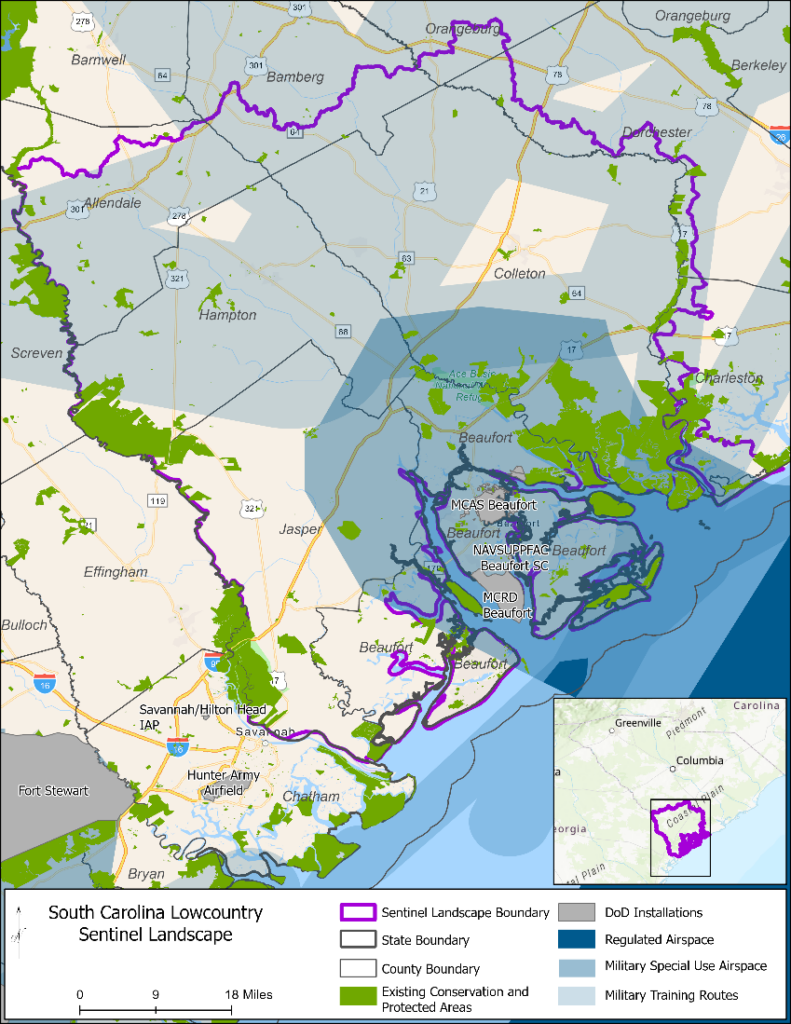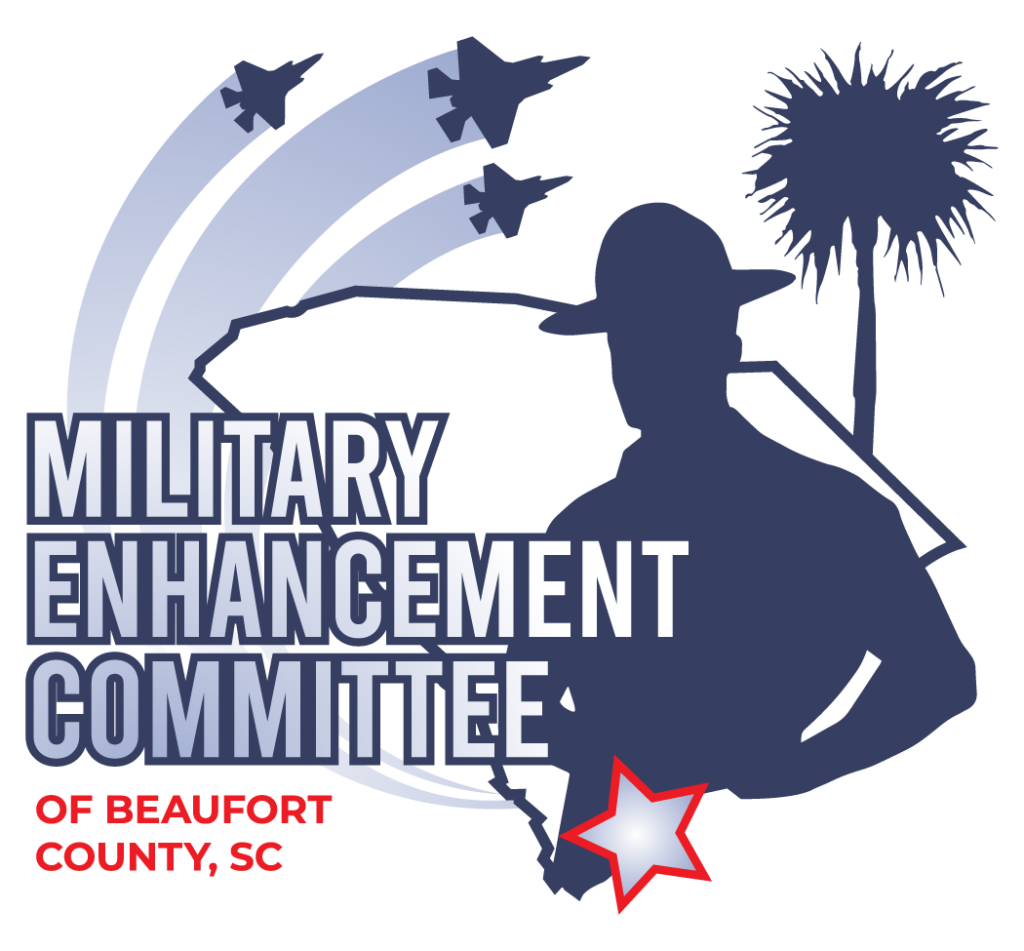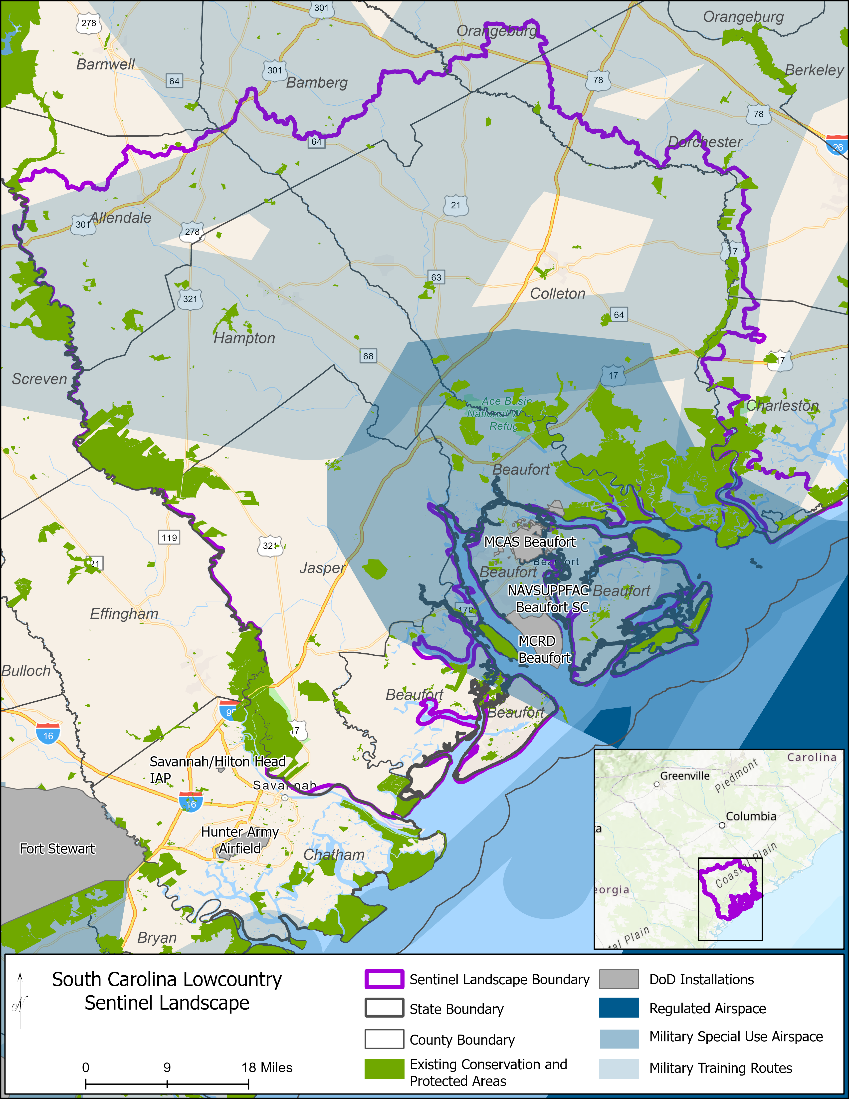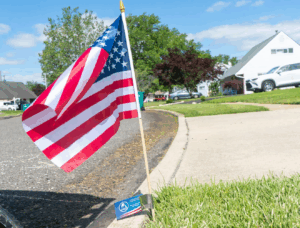As we all know, the effects of a military installation are not constrained to just inside it’s fence line. Every citizen of Beaufort County has witnessed the programs and policies that promote cooperation between military bases and communities, and we’ve written extensively about the variety of positive economic impacts that military installations promote at the local, regional, and state levels. But one area of civil-military cooperation that may not be as well-known concerns land and sustainable land management.
It’s obvious enough that military bases require land. However, the use of land directly outside military bases is, in many cases, just as important. For instance, MCAS Beaufort is primarily used for Marine Corps fighter jet training. If certain land around MCAS Beaufort is developed for housing or other industry, the flight corridors used to train Marine aviators could be narrowed – complicating or even imperiling the base’s main mission. Additionally, sustainable land management can contribute to the safety and stability of installation ranges and other training areas on military installations.
It’s for reasons like these that the Sentinel Landscapes Partnership exists. The program was founded in 2013 as a joint effort between the Department of Defense, Department of Agriculture, and Department of the Interior as a way to both strengthen military readiness and to conserve land for agriculture, forestry, and natural resource production. It is designed as a method to ensure military installations can meet necessary requirements while at the same time connecting private landowners with state and federal funding, loans and other aid meant to ensure their land is used in a way that is mutually beneficial to the landowners themselves and the defense community.
As of 2023, the South Carolina Lowcountry has joined the Sentinel Landscapes Partnership. The program is tailor-made for areas such as Beaufort County as it will help installations such as MCAS Beaufort and MCRD Parris Island preserve their mission needs while also protecting the natural resources of the area. Specifically, the program cites supporting the “2.2 million acres of longleaf pine forest, ranchlands, salt marsh, forested wetlands, and unbroken wildlife corridors in the southeastern corner of South Carolina” and makes clear that the goals of the Lowcountry partnership include preserving ecologically significant areas, drinking water supplies, and working farmlands. Another reason to be excited for the program is the number of partners who have signed on. The Sentinel Landscapes website lists nearly twenty state and federal organizations plus a dozen private entities who will be collaborating on this effort in the future.
While Beaufort is no stranger to the benefits of military-civilian cooperation, the Sentinel Landscapes Partnership is an encouraging expansion of that familiar trend. We look forward to both the economic benefits of this partnership and having the ability to enjoy the unique landscapes of the Lowcountry for many years to come.
For more information on this program, see: https://sentinellandscapes.org/landscapes/south-carolina-lowcountry/






